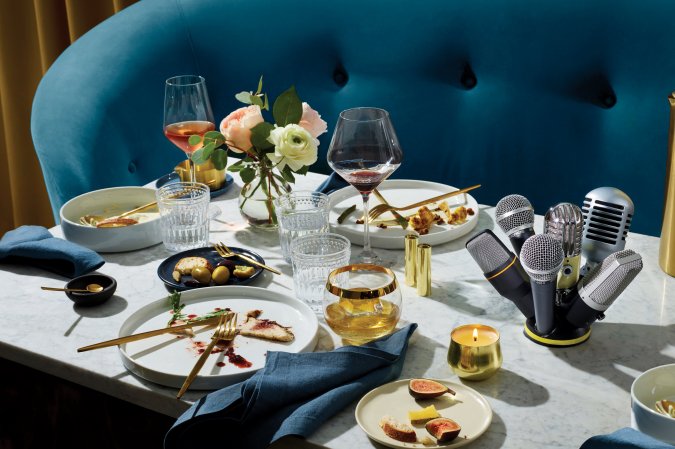

What would you put in your dream home? A pool? A wine cellar? For the 48 million Americans with some degree of hearing loss, practical considerations can trump showy add-ons. Instead of installing a basement ball pit, for instance, you might add a doorbell that vibrates your phone when someone’s there. We’ve used simple tweaks—and theoretical gizmos based on emerging tech—to build a house that doesn’t assume you can hear.
Aging boomers and lifelong earbud addicts could help give some of these design principles an increasingly universal appeal. But even if your senses stay pitch-perfect, consider how a few changes could make your house more accessible—and make life easier for everyone.

The greatest room
A counter facing into the living area keeps the cook from missing any action. Appliances with insulation to hush hums and rattles make it easier to hear soft voices and feel buzzing alerts.
Wide-open spaces
Playing hide-and-seek with the kids is great—when it’s on purpose. Open plans with long sightlines, including between floors and out to the yard, boost safety if you can’t listen for giggles.
No mood lighting
Shadows and the glow from windows and bare bulbs impede lip reading, signing, and other visual forms of gab. Even and diffuse illumination makes it easier to see faces and gestures.
Private eyes
Some baby monitors tailor phone alerts to reflect a cry’s volume. As AI gets better at interpreting video, devices might one day be able to quickly assess fussy children for signs of injury.
Closed doors
Knocking to check the bathroom for occupants works only if both parties can hear. A motion-activated indicator light can flag the room’s status to others who need to go.
A dark refuge
Relying on visual cues can make the hard of hearing more light-sensitive, so dark bedrooms are crucial. Some blackout curtains also dampen vibrations that could drown out pillow talk.
Round up
Semicircles of chairs make people face each other. That’s conducive to all kinds of chitchat—from intimate murmurs between the hard of hearing to totally silent discussions.
Groovy tunes
If speakers could sync up with hearing devices, they could calibrate a safe volume to suit the room’s most sensitive ears. Placement on the floor allows music lovers who can’t hear to feel tunes in their feet.
A room with a view
If transparent tablets ever hit the market, windows that display alerts, phone call transcripts, news, and song lyrics could replace buzzing doorbells and alarm systems.
This story originally published in the Noise, Winter 2019 issue of Popular Science.







